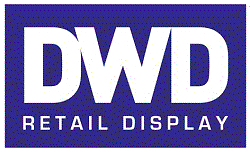Effective Product Placement Tactics for Retail Success
- DWD Retail Display

- Oct 7
- 3 min read
In the competitive world of retail, how products are displayed can make a significant difference in sales and customer experience. Retail display placement is more than just arranging items on shelves; it is a strategic approach to attract attention, encourage purchases, and enhance brand visibility. This article explores practical tactics to optimise retail display placement for maximum impact.
Understanding Retail Display Placement and Its Importance
Retail display placement involves positioning products in a store to maximise visibility and appeal. The goal is to guide customers naturally through the store, highlight key products, and create an engaging shopping environment. Effective retail display placement can:
Increase product visibility
Boost impulse purchases
Improve customer flow and experience
Enhance brand recognition
For example, placing high-demand or seasonal items at eye level can increase the likelihood of purchase. Similarly, grouping complementary products together encourages customers to buy more.

Key Strategies for Successful Retail Display Placement
To create impactful retail displays, consider these essential tactics:
1. Use the Power of Eye-Level Placement
Products placed at eye level tend to sell better because they are the first items customers notice. This prime space should be reserved for high-margin or popular products.
2. Leverage End Caps and Checkout Areas
End caps (the displays at the end of aisles) and checkout counters are high-traffic zones. Featuring promotional or impulse-buy items here can significantly increase sales.
3. Create Themed Displays
Themed displays related to seasons, holidays, or events attract attention and create a sense of urgency. For example, a summer-themed display with beach accessories and sunscreen can boost sales during warmer months.
4. Use Clear Signage and Lighting
Good lighting highlights products and draws customers in. Clear, concise signage helps shoppers find what they need quickly and encourages exploration.
5. Maintain Clean and Organized Displays
Cluttered or messy displays can deter customers. Regularly tidy shelves and ensure products are front-facing and well-stocked.

What are the three types of product placement?
Product placement in retail can be categorised into three main types, each serving a unique purpose:
1. Primary Placement
This is the most prominent placement, usually at eye level or in high-traffic areas. It is reserved for bestsellers or new products to maximise visibility.
2. Secondary Placement
Secondary placement supports primary products by positioning complementary items nearby. For example, placing batteries next to electronic gadgets.
3. Tertiary Placement
This involves less prominent areas, such as lower shelves or corners, often used for clearance or less popular items.
Understanding these types helps retailers allocate space effectively and create a balanced shopping experience.

How to Measure the Success of Retail Display Placement
Tracking the effectiveness of your retail display placement is crucial for continuous improvement. Here are some methods:
Sales Data Analysis: Monitor sales before and after changing product placement.
Customer Traffic Flow: Use heat maps or foot traffic counters to see which areas attract the most visitors.
Customer Feedback: Gather insights through surveys or direct feedback about store layout and product visibility.
Inventory Turnover: Track how quickly products sell to identify successful placements.
By analysing these metrics, retailers can refine their strategies and focus on what works best.
Enhancing Retail Success with Effective Product Placement
Implementing effective product placement is essential for retail success. Using quality display stands and fixtures can elevate the presentation of products and attract more customers. Investing in versatile and attractive retail display solutions allows for easy adjustments and seasonal updates, keeping the store fresh and engaging.
Retailers should consider partnering with suppliers who offer customised display options tailored to their product range and store layout. This approach not only improves aesthetics but also supports marketing campaigns and promotions.
Final Thoughts on Retail Display Placement
Retail display placement is a powerful tool that can transform the shopping experience and drive sales. By understanding customer behaviour, using strategic placement tactics, and continuously measuring results, retailers can create an inviting environment that encourages purchases.
Remember, the key to success lies in combining creativity with data-driven decisions. Keep displays clean, well-lit, and relevant to customer needs. With the right approach, retail display placement becomes a competitive advantage that boosts both customer satisfaction and business performance.




Comments